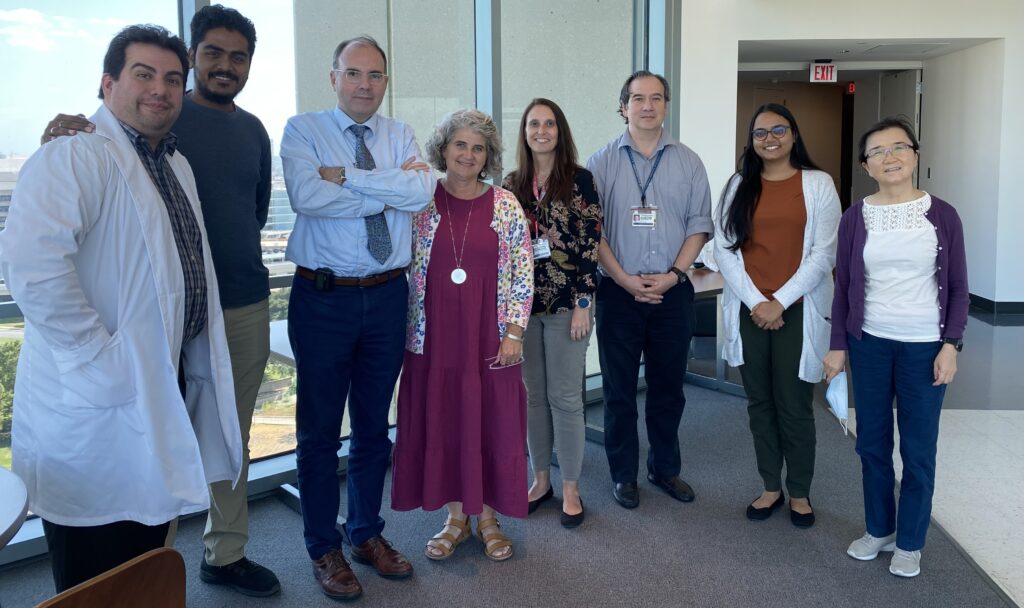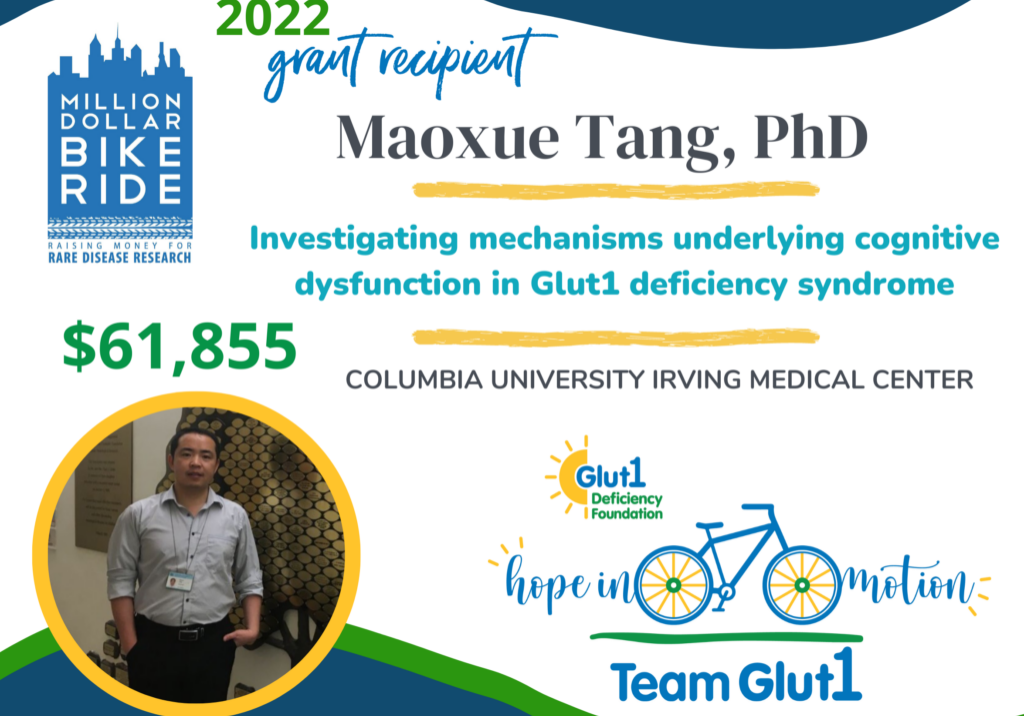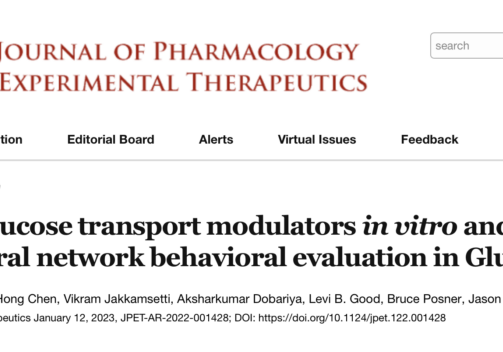New NIH grant for Glut1 Deficiency Research!
We are thrilled to share that a new RM1 Team Science research grant has been awarded to Dr. Juan Pascual and a team of collaborators to study glucose metabolism in the brain in context of Glucose Transporter Type 1 Deficiency Syndrome (Glut1 Deficiency). This is a prestigious five year award from the National Institute of Neurological Disorders and Stroke (NINDS), which will provide $1.7 million in funding for the team in year 1 and additional funds in years 2 through 5.
Dr. Pascual continues to focus his growing research activities and clinical practice on better understanding Glut1 Deficiency and finding easier and more effective ways to treat it. He has been an essential partner to the Glut1 Deficiency Foundation, our work, and most importantly to our community since the beginning. This new project exemplifies the value he places in the team approach to tackling complex problems, his pioneer spirit and outside the box approach to science that will continue to help transform the field, and his dedication to and care for patients and families. We are so thankful for him.
Dr. Pascual added, “It is very exciting that the NIH is so supportive of G1D research. We are very grateful to the reviewers who evaluated our grant proposal and to the NIH program staff who facilitate and support our work. As the proposal category indicates, this was a team effort. There are numerous persons involved in several laboratories throughout the U.S. All the years of preliminary work were pleasant and productive thanks to them. As importantly, this could not have happened without the support of the Glut1 Deficiency Foundation, both for this specific grant but also for much of the groundwork that has led to it. The steps that the Foundation has taken over the years to support research and unite the patient community were widely recognized during the evaluation of our grant by NIH, including the Foundation’s support of pilot research and of other fronts that have now come together. We in the laboratory are fully aware that this support comes mainly from families who want to help us for the sake of advancing science, often without a clear guarantee of success (since such is the nature of transformative science at the forefront of knowledge). This is a stimulus for us to more and to do it better each day. I am pleased to report that just a short time into this new line of research, work on the science described in the grant is already bearing fruit. Hopefully, we will be in touch soon with some new ideas that had remained out of reach until now. Thank you from all of us for making this possible.”
PROJECT TITLE:
BRAIN GLUCOSE DEFICIENCY: MECHANISMS AND MODULATION
PROJECT TEAM:
Juan Pascual, MD, PhD
Stuart Cogan, PhD
Craig Malloy, MD
Joseph Pancrazio, PhD
Ramon Sun, PhD
ABSTRACT:
Biochemical principles and experimental and clinical observations support the centrality of glucose metabolism to brain function. In this context, diagnostic positron emission tomography applied to several categories of neurological disorders such as dementia or epilepsy has long made patent reductions in glucose accumulation in certain brain areas. However, this is not necessarily synonymous with similar reductions in downstream metabolic flux and neural excitation. In fact, endogenous alternative fueling and hyperexcitability are often observed in these diseases. In this proposal, we will develop the metabolic and neurophysiological means to clarify this apparent excitability paradox by using Glucose transporter I (GLUT1) deficiency (G1D) as a model system.
The conceptual framework rests on 3 postulates applicable to an increasing number of disorders: 1) metabolic failure results in preferential inhibitory (relative to excitatory) neuron dysfunction, which alters specific neural circuit activities; 2) these mechanisms can be non-invasively observed at play in afflicted persons and 3) they may be metabolically modulated for therapeutic gain. To test the postulates, we will first characterize the interrelation between metabolism and excitability in a G1D mouse model. With this information, we will then measure flux downstream from glucose to neurotransmitters in conjunction with neurophysiological activity in persons.
A team approach will harmonize the progression of mechanisms and results across the biological scale spanning from molecular flux and interconversions to cells, the thalamocortical circuit, behaving mice and the human brain. The team is indispensable because each of our investigational aims is fulfilled by more than one of our laboratories, with the results obtained from each experimental method informing the rest of the studies.
Because the methods are inherently sensitive to flux rather than simple abundance, we will evaluate two flux ratios that describe the overall neurophysiological and metabolic states of the G1D brain: 1) LGR (low to gamma frequency electrical oscillation ratio) and 2) GOI (blood glucose oxidation by the brain TCA cycle index). Translation will be achieved via a Basic Experimental Study with Humans that will test whether GOI reflects disease severity. We will further test GOI and LGR in a Mechanistic Trial that will utilize a mechanism-testing framework broadly applicable to metabolic interventions. The trial will investigate red blood cell exchange (i.e., the replacement of human G1D circulating red cells, which are deficient in GLUT1) with healthy donor cells as a novel means to augment blood-to-brain glucose transport.
The proposal benefits from structured management, timed benchmarks and Plans for Enhancing Diverse Perspectives and Data Sharing that leverage and extend extensive institutional and G1D Foundation resources. If successful, our approach will provide the conceptual and methodological groundwork to transform the evaluation or treatment assessment of other thalamocortical disorders and the mechanistic analysis of metabolic treatments in types of dementia and epilepsy.
PUBLIC HEALTH RELEVANCE:
Pathogenic mutations of the brain glucose transporter type I lead to glucose transporter deficiency syndrome (G1D), which is most often associated with medication-refractory epilepsy and movement dysfunction. At present, G1D is only alleviated by interventions such as the ketogenic diet, which can be poorly tolerated and afford only an incomplete restoration of neural function. A better understanding of G1D fulfills the NIH mission by uncovering new fundamental aspects of brain function while facilitating the development of new therapies aimed to restore brain metabolism and excitability.




